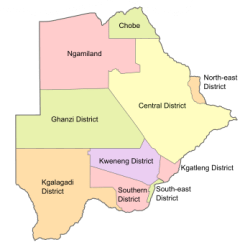Lake Titicaca is a stunning and iconic body of water that straddles the border between Peru and Bolivia. Renowned for its breathtaking scenery, cultural significance, and geographic superlatives, the lake is a marvel of nature and human heritage.
Key Features of Lake Titicaca
1. High-Altitude Marvel
- Elevation: At a staggering 12,507 feet (3,812 meters) above sea level, Lake Titicaca is one of the highest navigable lakes in the world.
- Impact of Altitude: This lofty location places the lake within the Andes mountain range, offering a surreal and dramatic backdrop.
2. Immense Size
- Surface Area: Covering approximately 3,232 square miles (8,372 square kilometers), Lake Titicaca is the largest lake in South America by surface area.
- Depth: Its maximum depth of 922 feet (281 meters) makes it as voluminous as it is expansive.
3. Dual-Nation Status
- The lake is shared almost equally between Peru and Bolivia, with its waters fostering a shared cultural and economic bond between the two nations.
Natural and Cultural Significance
1. A Cradle of Ancient Civilizations
- Lake Titicaca holds immense historical importance as the legendary birthplace of the Inca civilization.
- The lake is said to be the origin of Manco Cápac and Mama Ocllo, the mythical founders of the Inca Empire.
2. Unique Island Communities
- Uros Floating Islands: Handcrafted from totora reeds, these floating islands are home to the Uros people, who have lived on the lake for centuries.
- Isla del Sol and Isla de la Luna: These sacred islands, located on the Bolivian side, are steeped in myth and contain significant archaeological ruins.
3. Biodiversity Hotspot
- Lake Titicaca supports diverse ecosystems, hosting unique flora and fauna, including the endangered Titicaca water frog and a variety of endemic fish species.
Tourism and Activities
1. Boating and Exploration
- Visitors can explore the lake by boat, visiting islands like the Taquile and Amantaní islands, renowned for their traditional textile-making and hospitality.
2. Cultural Immersion
- Tourists often stay with local families on the islands, experiencing traditional Andean customs and lifestyles.
3. Adventure and Nature
- Activities like hiking the terraced slopes of the lake, stargazing in its clear skies, and marveling at the Andes are common draws for adventurers.

Interesting Facts About Lake Titicaca
- “Lake of the Puma”: The name “Titicaca” translates to “Rock of the Puma” in the Aymara language, inspired by the lake’s shape, which resembles a puma catching prey.
- Underwater Ruins: Archaeologists have discovered submerged ruins beneath the lake’s surface, hinting at ancient settlements and cultural practices.
- Cultural Festivals: The region celebrates colorful festivals like the Fiesta de la Candelaria, showcasing traditional dances, music, and rituals.
The Magic of Lake Titicaca
Lake Titicaca is more than just a natural wonder; it’s a living, breathing cultural and ecological treasure. Its towering altitude, massive expanse, and deep cultural roots make it a must-visit destination for anyone seeking to connect with nature and history in one of the world’s most extraordinary settings.







